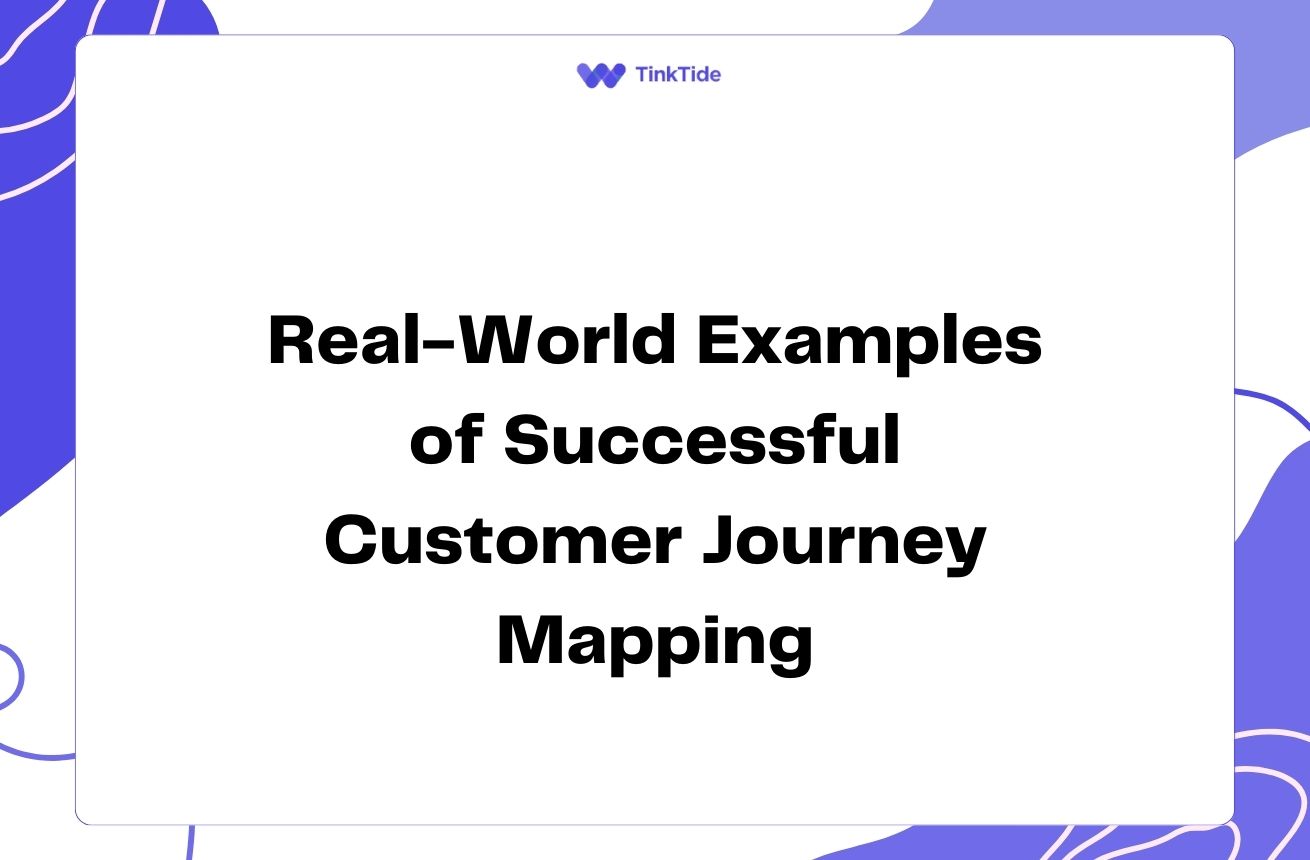Evaluating Customer Journey Mapping: Measuring Effectiveness and ROI
Understanding the Importance of Evaluation
Customer journey mapping is a powerful tool for understanding and improving the customer experience. However, to truly leverage its potential, you need to evaluate its effectiveness and measure its return on investment (ROI). This process helps you justify the resources invested in journey mapping and identify areas for improvement.
Effective evaluation of your customer journey mapping efforts allows you to quantify the impact on key business metrics, such as customer satisfaction, retention rates, and revenue growth. By measuring these outcomes, you can demonstrate the value of journey mapping to stakeholders and make data-driven decisions to optimize your customer experience strategy.
Moreover, regular assessment of your journey mapping initiatives ensures that they remain aligned with evolving customer needs and business objectives. This ongoing evaluation process helps you stay agile and responsive in a dynamic market environment.
Key Metrics for Evaluating Effectiveness
To assess the effectiveness of your customer journey mapping efforts, focus on these key metrics:
- Customer Satisfaction Score (CSAT): Measure how satisfied customers are at various touchpoints.
- Net Promoter Score (NPS): Gauge customer loyalty and likelihood to recommend your brand.
- Customer Effort Score (CES): Evaluate the ease of customer interactions with your company.
- Conversion Rates: Track the percentage of customers completing desired actions.
- Churn Rate: Monitor the rate at which customers stop doing business with you.
Techniques for Measuring ROI
Calculating the ROI of customer journey mapping involves comparing the costs of implementation with the financial benefits gained. Here are some techniques to measure ROI:
1. Cost Reduction Analysis: Identify areas where journey mapping has led to process improvements and cost savings. For example, if you've streamlined a customer service process, calculate the reduction in operational costs.
2. Revenue Impact Assessment: Measure the increase in revenue attributable to journey mapping initiatives. This could include higher conversion rates, increased cross-selling, or improved customer retention.
3. Customer Lifetime Value (CLV) Calculation: Determine how journey mapping has influenced CLV by analyzing changes in purchase frequency, average order value, and customer lifespan.
To calculate ROI, use the formula: ROI = (Net Benefit / Cost of Investment) x 100. Net benefit is the total financial gain minus the cost of implementing journey mapping.
Implementing Continuous Feedback Loops
Establishing continuous feedback loops is crucial for ongoing evaluation of your customer journey mapping efforts. This approach allows you to gather real-time insights and make iterative improvements.
Implement Voice of Customer (VoC) programs to collect feedback at key touchpoints. Use surveys, interviews, and social media monitoring to capture customer sentiments and experiences.
Leverage customer journey analytics tools to track customer behavior across channels and identify pain points or opportunities for improvement. These insights can help you refine your journey maps and prioritize enhancement initiatives.
Regularly review and update your journey maps based on the feedback and data collected. This iterative process ensures that your maps remain accurate and relevant, reflecting the evolving customer experience landscape.
Aligning Journey Mapping with Business Objectives
To maximize the impact of your customer journey mapping efforts, align them closely with your overall business objectives. This alignment ensures that your journey mapping initiatives contribute directly to your company's strategic goals.
Start by identifying key performance indicators (KPIs) that reflect your business objectives. For example, if your goal is to increase customer retention, focus on metrics like churn rate and repeat purchase frequency.
Create a dashboard that visualizes the relationship between journey mapping initiatives and these KPIs. This visual representation helps stakeholders understand the impact of journey mapping on business outcomes.
Regularly review the alignment between journey mapping efforts and business objectives. As your business strategy evolves, ensure that your journey mapping initiatives adapt accordingly to maintain relevance and effectiveness.
Steps for Comprehensive Evaluation
Follow these steps to conduct a comprehensive evaluation of your customer journey mapping efforts:
- Step 1: Define clear objectives and success criteria for your journey mapping initiatives
- Step 2: Establish baseline measurements for key metrics before implementing changes
- Step 3: Implement journey mapping improvements and track changes in metrics over time
- Step 4: Analyze the data to identify correlations between journey mapping efforts and business outcomes
- Step 5: Calculate ROI using the formula mentioned earlier
- Step 6: Present findings to stakeholders and use insights to inform future strategies
Overcoming Common Challenges
Evaluating the effectiveness of customer journey mapping can present several challenges. One common issue is data silos, where relevant information is scattered across different departments or systems. To address this, implement a centralized data management system that integrates data from various sources.
Another challenge is attributing specific outcomes to journey mapping initiatives when multiple factors may influence results. Use attribution modeling techniques to isolate the impact of journey mapping efforts from other variables.
Lastly, maintaining stakeholder buy-in throughout the evaluation process can be difficult. Regularly communicate progress, share success stories, and demonstrate the tangible benefits of journey mapping to keep stakeholders engaged and supportive.
Address common questions
Here are some frequently asked questions about evaluating customer journey mapping effectiveness and measuring ROI:
How often should we evaluate our customer journey mapping efforts?
It's recommended to conduct a comprehensive evaluation at least annually. However, you should monitor key metrics on an ongoing basis and perform smaller-scale assessments quarterly to identify trends and make timely adjustments.
What's a good ROI for customer journey mapping initiatives?
A good ROI varies depending on your industry and specific circumstances. Generally, an ROI of 5:1 or higher is considered strong for customer experience initiatives. However, even a lower ROI can be valuable if it leads to long-term improvements in customer satisfaction and loyalty.
How can we measure the intangible benefits of customer journey mapping?
While some benefits are hard to quantify directly, you can use proxy metrics. For example, improved employee satisfaction due to better customer interactions can be measured through employee engagement surveys. Increased brand reputation can be assessed through social media sentiment analysis and brand perception studies.
What tools can help in evaluating customer journey mapping effectiveness?
Several tools can assist in evaluation, including customer feedback platforms like Qualtrics or SurveyMonkey, journey analytics software like Pointillist or Thunderhead, and data visualization tools like Tableau or Power BI. CRM systems like Salesforce can also provide valuable data for analysis.
How do we account for external factors when measuring the impact of journey mapping?
Use control groups or A/B testing when possible to isolate the effects of journey mapping. Additionally, consider using statistical techniques like regression analysis to control for external variables and identify the specific impact of your journey mapping initiatives.
Provide additional resources
Customer Journey Mapping Guide
Comprehensive guide on creating and using customer journey maps
Measuring Customer Experience ROI
Gartner's approach to measuring CX ROI
Journey Analytics Tools Comparison
Compare top customer journey analytics tools
Voice of Customer Best Practices
Guide to implementing effective VoC programs
Data Visualization Techniques
Tips for effective data visualization in business analytics
Summarize key takeaways
Evaluating the effectiveness of customer journey mapping and measuring its ROI is crucial for optimizing your customer experience strategy. By focusing on key metrics, implementing continuous feedback loops, and aligning with business objectives, you can demonstrate the value of journey mapping and drive meaningful improvements.
Remember that evaluation is an ongoing process. Regularly assess your journey mapping efforts, overcome challenges through data integration and stakeholder communication, and use insights to refine your approach continually.
By following the techniques and steps outlined in this guide, you'll be well-equipped to measure and maximize the impact of your customer journey mapping initiatives, ultimately leading to improved customer satisfaction, loyalty, and business performance.
Optimize Your Customer Journey Today
Start measuring the effectiveness of your customer journey mapping with our powerful analytics tools.
Start Your Free Trial

